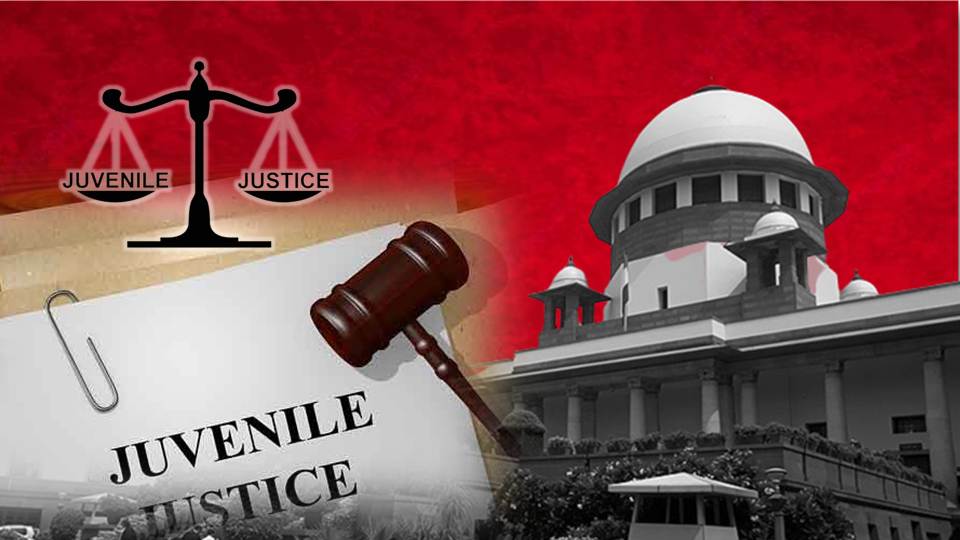Juvenile Justice Act: Law is a crucial driving force in social transformation, and acts as a barometer of societal complexities and value systems in practice. As society advances, the demand for legal reformation takes a front seat.
Thereby, archaic provisions of laws are required to be scrapped or modified to be in tune with the changing times. Therefore, the Hon’ble Prime Minister in 2016 stated that the Law Commission of India has identified 2,000 laws that require revision.
The horrific Nirbhaya gang rape incident ignited the debate over lowering the age for criminal prosecution. It led to an amendment to the Juvenile Justice Act of 2000. Therefore, the Juvenile Justice (Amendment) Act, 2015, provides to reduce the age of a juvenile in conflict with the law from 18 to 16 years.
Deterrence for minors
The new measure of reducing the age cap for prosecuting juveniles from 18 to 16 was done with the view of deterrence against those below 18. But the efficacy of the move needs to pass the test of time. With the changing dynamics of society, the success of legislation appears to be far from bearing fruit in the interests of society.
The new media culture and western notions of social lifestyles are being shoved into the minds of the youth without appropriate guidance and tutoring. Therefore, the mesmerised youth with their fictional notions of pleasure are causing more unrest in society than ever before. The gruesome crimes that are being inflicted by minors and youths are an outcome of increased media consumption.
Also read: The Case of Ismail Farooqui vs. Union of India: Why Hindus Can Worship in Ram Mandir
Mens Rea and Actus Reus: Age is no longer the criteria
The legal policy that once considered a person to have criminal faculties at the age of 18 has become obsolete. The issue has also been highlighted by P.V. Ramakrishna Rao, former A.P.P. and Legal Advisor to the Police Commissionerate. He proposed that it is debatable as to whether the reduction in the age limit will yield positive results in bringing down the crime rate among youngsters.
That is to say that age is just a number, and it is rather criminal psychology that is at play in the commission of a crime. Therefore, a deeper look into the NCRB figures shows that in the NCT of Delhi alone, 3287 juveniles had been apprehended in 2021, out of which 1387 had not gone beyond the matriculation (10th grade) in terms of education, 951 had not gone beyond the primary education, and a total of 613 were illiterate.
What is more alarming is that only 214 were homeless, while 2538 were living with their parents and 535 with guardians. What do you think is the reason behind this alarming rise in the cases?
The obvious answer is this virtual and new media culture that is feeding in youths and minors notions of criminal attributes.
Also read: 2022, Jacob Puliyel vs. Union of India: Supreme Court dictum on mandatory Covid vaccination
New Media and Violent Youths
A distressing rise could be seen in the crime rate in the society, owing to the information available on the digital platforms. Moreover, the cinematographic works and frictional movies are inclined towards promoting violent and dark shady characters as the front-runners of masculinity. The cumulative effects of these factors, therefore, imprint on the psychology of the immature kids and garner criminal tendencies in them.
Way ahead: Role of the Government
The only possible way out to effectively tackle the issue is that the legislation should segregate the “rarest of rare cases” from the less gruesome ones, and the protection of the Juvenile Justice Act should not be given to the offenders in the rarest of rare cases. That is to say, the offender should be legally prosecuted on the basis of the psychological gruesomeness of the offence in addition to the actus reus. And age should not be a bar for prosecution.
Furthermore, the government and judiciary should not get carried away with the idea of a reformative theory of punishment. Under the changing dynamics of crime, youths can be said to be better versed with technology, and therefore, age is no longer the appropriate criteria.
The technological advancement and the level playing field created by the digital media platforms pose a serious challenge to the administration of law and order in the times to come. Therefore, the legislature should upgrade itself from looking at the crime from the binary of age and reformation.
Justice to Victim in contrast to Reformative Justice
The pains of the victims should also be taken into consideration, even when an offence is committed by a juvenile. The Nirbhaya incident is perhaps the most gruesome example of injustice. While the victim and her family suffer for life, the juvenile offender roams free after completing his sentence.
Further, since the identities of most such offenders are hidden, the prospects of a threat to society after the release of these offenders are alarmingly high. Therefore, the government should bring in legal reforms with the view of curtailing the growing criminal tendency among the youth with appropriate deterrence.
Support TFI:
Support us to strengthen the ‘Right’ ideology of cultural nationalism by purchasing the best quality garments from TFI-STORE.COM
Also Watch:
https://www.youtube.com/watch?v=L_W3OfuuZlw
